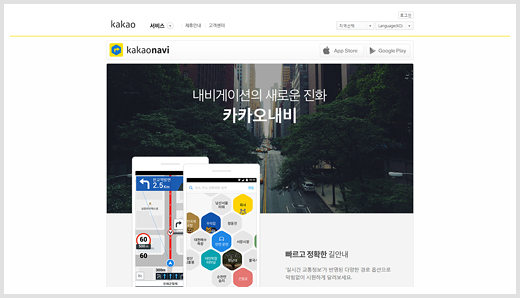Introduction


Kakao expanded its business to O2O market
Kakao is one of the most well-known messenger app in Korea. In 2014, Kakao merged with Daum, which is one of the biggest portal sites in Korea to empower its market power in the mobile platform industry. In 2015, Kakao is aiming to dominate O2O market with its new services including Kakaonavi.
Background

Needed ensuring a stable network since heavy network traffic causes instability
Kimkisa app (after Kakaonavi) users experienced heavy network traffic with its previous network infrastructure, because a lot of map image files had to be uploaded when the number of concurrent users rapidly increased. Especially navigation service was heavily used during weekends and national holidays that led to unstable connectivity and slow speed of the service.
What did KINX do?

Suggested IDC and CDN web/mobile service
KINX IDC and CDN web/mobile transmission services are with a superior network environment to other companies. It is possible for KINX to provide fast Internet due to interconnected domestic and global ISPs at KINX IDCs.
The key concept of CDN web/mobile transmission service is to boost the speed up by saving online contents (i.e., map image files) at edge servers in advance so that the files can be loaded on the website faster from an edge server in stead of the origin server. This shortens a lot of response time and meets customers’ needs to find directions fast.
Effect

Able to expand business to a global market and deal with heavy network traffic
With KINX CDN and IDC services, the app became able to provide better quality including stable data transmission, faster response time for downloading map image files etc. In addition, map/navigation services are not effected by a sudden increase of many concurrent users.




















